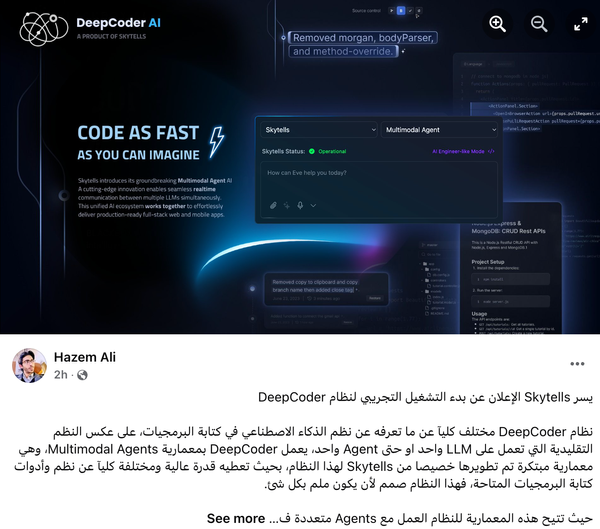Get Started with V: From Variables and Classes to Your First Web App
Table of Content
V is a high-performance, compiled programming language designed with simplicity and speed in mind.
It aims to provide the ease of development found in modern languages while maintaining the performance and low-level control of older, more established languages like C.
V is a general purpose language, but it is proven to be fast and ideal for creating web apps, desktop apps, game engines, and web scrappers.
Before we start lets list some popular apps that is written in V language.
Popular Apps Written Using V
- Vinix: An operating system kernel written in V.
- Vid: A 2D game engine for creating cross-platform games.
- vweb: A web framework for building web applications in V.
- vlang.io: The official website of the V programming language.
- VPM: The V package manager for managing V libraries and modules.
- VSL: V Standard Library, providing a collection of utilities and libraries for V programming.
- Ve: A lightweight text editor built using V.
- Vorlock: A file encryption and decryption tool written in V.
- VJSON: A high-performance JSON parser and serializer in V.
- Vaterpillar: A web crawler and scraper built with V.
These apps showcase the versatility and capability of the V language in various domains, from system-level programming to web development.
Features of V Language
- (Simplicity and Performance) Designed for simplicity and high performance.
- (Compilation) Compiles quickly and produces small, optimized binaries.
- (Safety) Ensures memory safety.
- (Safety) Avoids null pointer dereferencing and buffer overflows.
- (Safety) Robust type system.
- (Safety) Option types to handle null values.
- (Concurrency) Built-in support for concurrency.
- (Concurrency) Lightweight threads (coroutines).
- (Concurrency) Easy-to-use concurrency primitives.
- (Cross-Compilation) Supports various platforms (Windows, macOS, Linux, etc.).
- (Cross-Compilation) Generates minimal dependencies.
- (Cross-Compilation) Suitable for embedded systems.
- (Fast Compilation) Extremely fast compilation speed.
- (Interoperability) Seamless interoperability with C.
- (Interoperability) Easy use of C libraries.
- (Interoperability) Inline C support for performance-critical sections.
- (Syntax) Clean and modern syntax, influenced by Go and Rust.
Comparisons with Other Languages
1. V vs. C:
- Performance: Similar high performance but V provides more safety and modern syntax.
- Memory Management: V includes memory safety features absent in C.
- Development Speed: Faster compilation and more developer-friendly features.
2. V vs. Rust:
- Safety: Both focus on safety, but Rust has a more complex borrow checker.
- Syntax: V's syntax is simpler and more concise.
- Learning Curve: V is easier to learn and use compared to Rust's steep learning curve.
3. V vs. Go:
- Concurrency: Both have built-in concurrency support, but Go uses goroutines while V uses coroutines.
- Compilation Speed: V compiles faster than Go.
- Syntax: V has a simpler and more modern syntax.
4. V vs. Python:
- Performance: V is much faster due to its compiled nature.
- Use Cases: Python is more versatile for scripting and rapid prototyping, while V is better for performance-critical applications.
- Typing: V has static typing, while Python is dynamically typed.
5. V vs. Elm:
- Target Audience: Elm is focused on front-end web development, while V is a general-purpose language.
- Performance: V has better performance for system-level programming.
- Syntax and Safety: Both have modern syntax and safety features, but V's scope is broader.
Install V Language for Linux, Windows and macOS
1. Linux
Add V to PATH (optional):
export PATH="$PATH:/path/to/v"
Build V:
make
Clone the Repository:
git clone https://github.com/vlang/v
cd v
2- Windows
- Download the Installer:
- Go to the V website and download the Windows installer.
- Run the Installer:
- Open the downloaded installer and follow the installation instructions.
- Verify Installation:
Open Command Prompt and type:
v
3- macOS
Using Homebrew:
brew install vlang
Verify Installation:
v
These instructions will get V installed on your system. For further details and updates, refer to the official V documentation.
Tutorial: Variables, Classes, and Web App in V
1. Variables in V
Variables in V are declared using the mut keyword for mutable variables and without it for immutable variables.
fn main() {
// Immutable variable
name := 'V Language'
println(name)
// Mutable variable
mut age := 10
println(age)
// Modifying mutable variable
age = 11
println(age)
}
2. Classes (Structs) in V
V uses structs to define classes. Methods can be defined for structs to provide functionality.
struct User {
name string
age int
}
// Method associated with User struct
fn (u User) greet() string {
return 'Hello, $u.name!'
}
fn main() {
user := User{
name: 'Alice'
age: 30
}
println(user.greet())
}
3- Writing a Quick Web App in V
V has built-in support for creating web applications. Here's a simple web server example:
import vweb
struct App {
vweb.Context
}
['/']
fn (mut app App) index() vweb.Result {
return app.text('Hello, world!')
}
fn main() {
mut app := App{}
vweb.run<App>(mut app, 8080)
}
This code sets up a basic web server that listens on port 8080 and returns "Hello, world!" for the root route.
Conclusion
V language offers a blend of performance, safety, and simplicity, making it a compelling choice for developers looking for a modern alternative to languages like C, Rust, Go, Python, and Elm.
V fast compilation, memory safety, and concurrency support make it suitable for a wide range of applications, from systems programming to web development.











